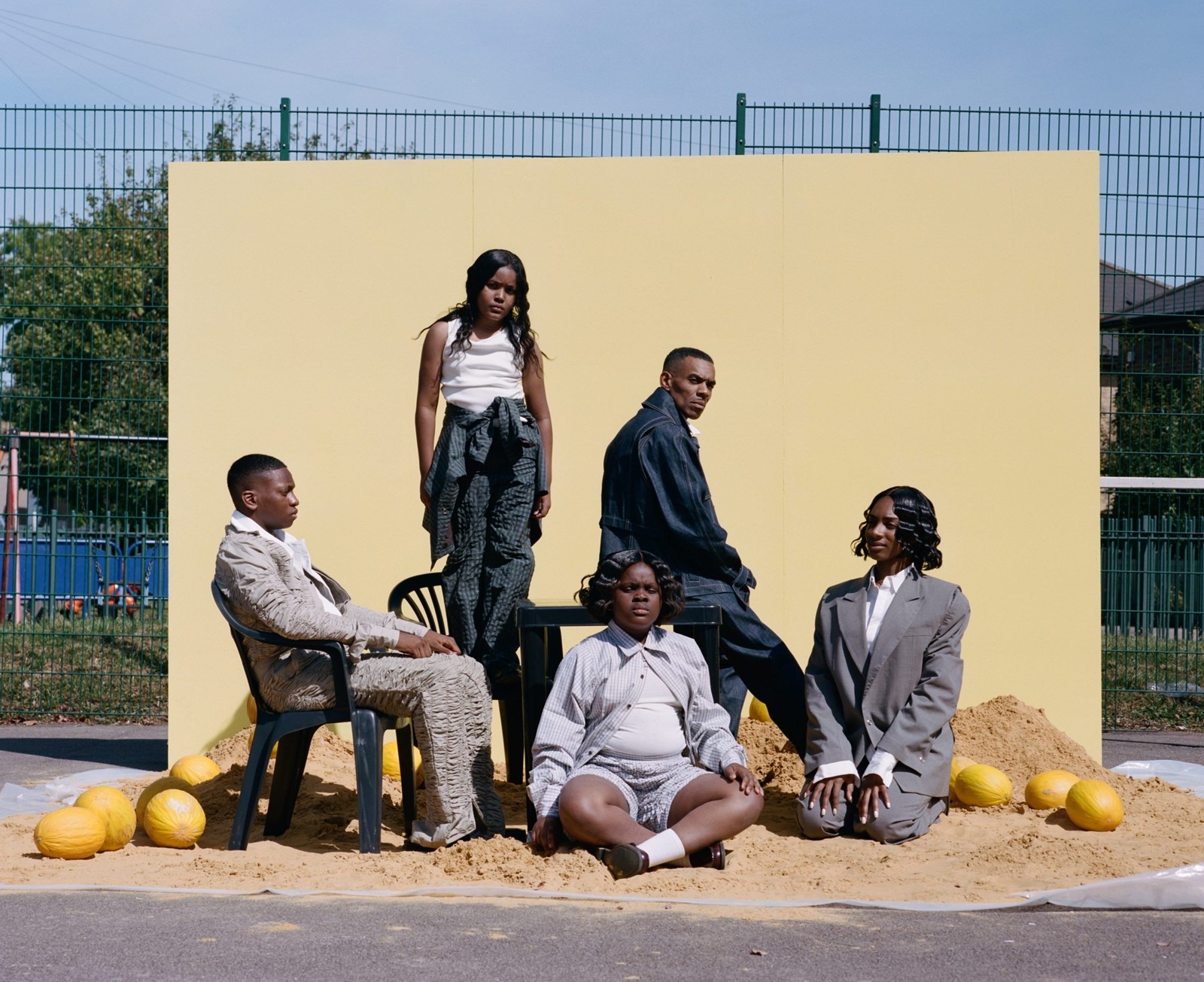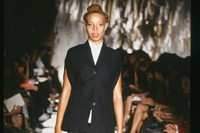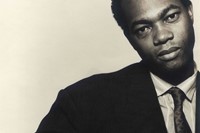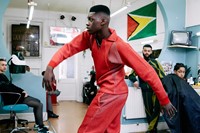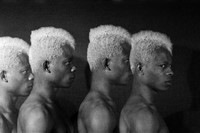Art historian, curator and writer Alayo Akinkugbe is behind the popular Instagram page A Black History of Art, which highlights overlooked Black artists, sitters, curators and thinkers, past and present. In a new column for AnOthermag.com titled Black Gazes, Akinkugbe examines a spectrum of Black perspectives from across artistic disciplines and throughout art history, asking: how do Black artists see and respond to the world around them?
The story of Black British fashion is presented in The Missing Thread: Untold Stories Of Black British Fashion, a new exhibition at Somerset House that spans from the 1970s to the present, touching on themes of home, tailoring, performance and nightlife. Curated by the Black Orientated Legacy Development Agency (BOLD), it brings together the work of artists including Maud Sulter and Chris Ofili with major contributors to British design history, including Ozwald Boateng and Christine Checinska, and presents the archive of fashion designer Joe Casely-Hayford in a UK exhibition for the first time.
The exhibition highlights the often uncredited and overlooked influence of Black style on British culture. Extending beyond clothes, it emphasises music, photography and art as important parts of the narrative which surrounds Black British design.
Fashion designer Bianca Saunders and writer, art director and curator of the Instagram page @rudeboysandrollups, Angela Phillips, were commissioned to create new works for Missing Thread. Saunders’ work was inspired by Althea McNish, the Trinidadian-born British textile designer who gained international repute, and Phillips’ influence for her short film – which marks her directorial debut – came from dancehall and rave culture.
In the following conversation, the pair discuss rude boy culture, the style of their family members, and moving beyond Blackness as a novelty in creative industries.
“People like Ozwald Boateng being the fashion director of a big fashion house like Givenchy and being the first Black owner of a store on Savile Row. It’s unheard of and showed me that there are ways to break barriers down” – Bianca Saunders
AA: Fashion is shown in this exhibition clearly as a form of artistic expression, alongside music, painting and photography. What draws you both to fashion?
AP: Fashion was ingrained in me from a young age. As you get older, you notice these things and see how important they are. Watching my mum, and how she is literally always immaculate, but it’s something that I didn’t notice until a lot more recently. Even my aunties in their church wear – I think that’s how my journey started. When I looked back at my teenage years, and how I developed my own style, it was kind of before [street style] was a thing. We just put things together and made things out of what we had, and now it’s being looked upon as a sort of “culture” – like street style, and street culture – but it was something that just came naturally to us.
BS: I definitely agree. A lot of the imagery that I take inspiration from has come from my family images. Especially in the early stages of my brand, when I was exploring rude boy subculture, I was looking at all my family images. Then I did my BA at Kingston and also took a lot of references [from family photographs], in terms of how outfits were put together. There’s always been an interject of being “well-kept” and sometimes, in certain societies, [being well-kept] is seen as being more effeminate than in others. But, I think that’s what has really inspired me with my brand.
AP: Looking at the style of rudeboy culture, where it came from and how it developed over here: we took the style of our parents in Jamaica and then we brought it over here and it developed into its own sort of style.
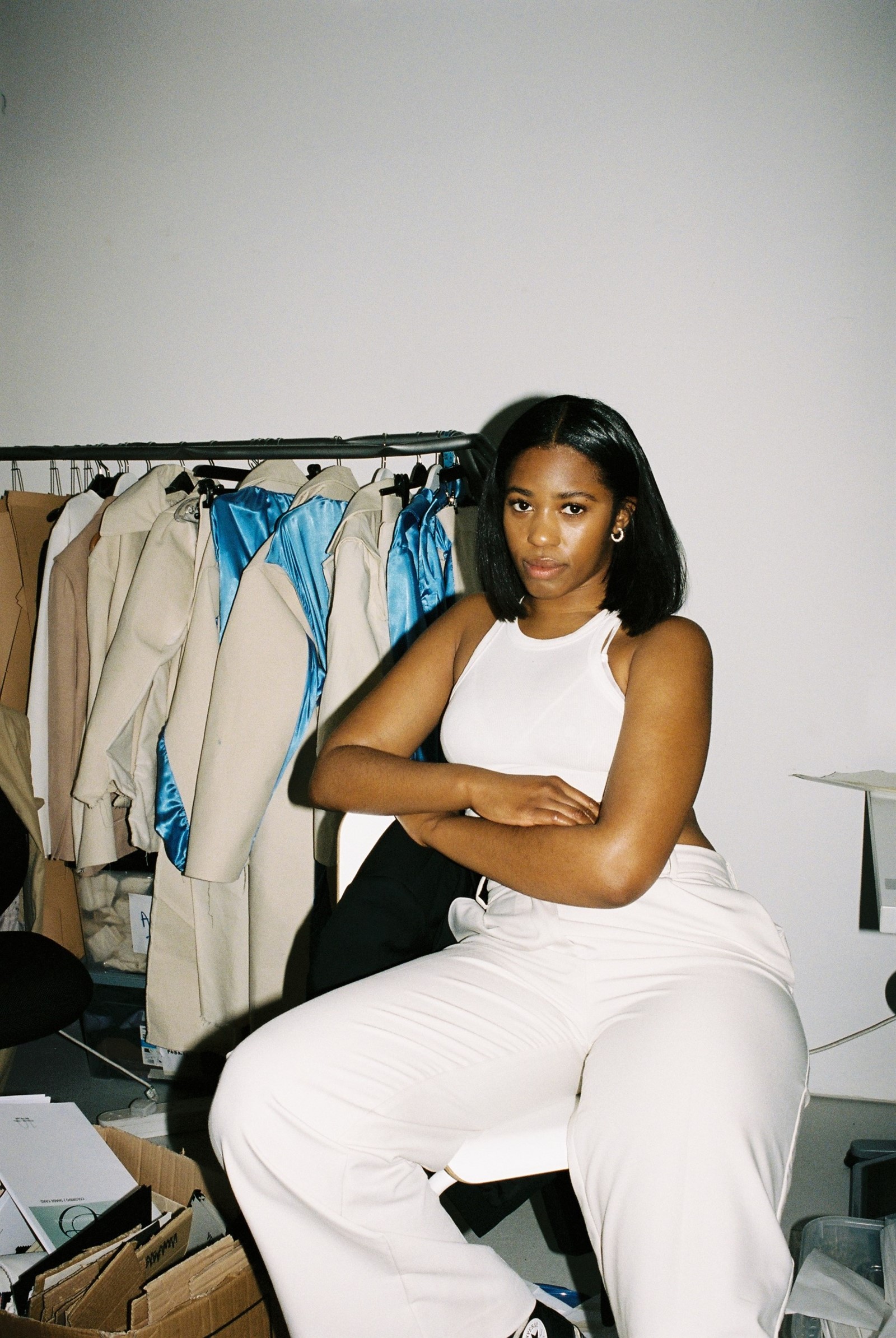
AA: The Missing Thread extends beyond fashion, spotlighting Black creativity through music, photography, art and design. Do these inform your creative processes?
AP: Absolutely. When I look at archive images, it’s not just about the person and what they are wearing, I’m also looking at the background. I’m looking at the velvet wallpaper, at the patterned carpet that doesn’t match the velvet wallpaper, the red leather sofas and everything to do with that image because it conjures up a sort of emotion that is really valuable. It’s not just the style, it’s the music that we were listening to, the smells around the house, like types of aftershave or perfume. They evoke certain memories, and that kind of gives you the whole picture of that time.
BS: I definitely would agree with you, Angela. I feel like in certain collections that I’ve done, it’s always been about how, for instance, the colours of the home are brought together. So, with my Spring/Summer 2020 collection, it was about the idea that in Black British homes there’s often a certain tone of yellow wall, and it brings the idea of familiarity. When I was working with that collection, I was looking at how we gain our style from each other. Before Instagram, that’s how we used to start trends; by looking at each other, because fashion wasn’t as obtainable then as it is now.
AP: I feel like you see the difference with the generations now who have Instagram. They can go online and see what’s trending. As you said, we didn’t have that. So it was kind of just putting things together that we felt were stylish.
BS: There are so many untold stories about the community that need to be highlighted more. In the exhibition, seeing all of Joe Casely-Hayford’s work, I’m sure there are a lot of people who don’t know the earlier eras of his fashion design and how he put things together, most people know him for the tailoring side of things.

AA: The Missing Thread, includes the work of trailblazers who achieved major success but remain excluded from mainstream stories of British fashion. In the generations that came before you, who are you both most influenced by?
BS: Most of the time it was my family that influenced me, looking back at those old photos and trying to encapsulate that smoothness that didn’t look forced. But also, people like Ozwald Boateng being the fashion director of a big fashion house like Givenchy and being the first Black owner of a store on Savile Row. It’s unheard of and showed me that there are ways to break barriers down.
AA: Do you feel that creative industries have become more inclusive or are there still changes that need to come?
BS: I think the internet has offered Black people and people of colour more democracy. In terms of making sure that certain institutions see you, or [that they] become more inclined to actually have you in those spaces is [often to do with] the influence that you’ve created online. Social media platforms have allowed certain people to be a part of fashion, which is very much a rigid and difficult industry to get into. It’s more about what sort of group you can create with your audience, and how you can make people follow you in a way that makes them feel that they are a part of a movement or something that’s really interesting.
AP: I definitely do feel like changes need to come because we have had to create our own thing: our own brands, our own record labels – whatever it is – within our chosen field. We’ve had to create ourselves. There is a lot of change that is needed in order to get a foot in the door within these sorts of institutions. I think Black people have probably got a bit disheartened a lot of the time, and started creating their own things because of the difficulty of getting into these institutions. Our style is used within certain things, but we are not credited. So, there is a lot to be done. Money is being made off of our culture and we are not receiving that money.
BS: I definitely agree. I think we have a long way to go in terms of making it less of a novelty to be included.
AP: That’s it right there, novelty. A lot of the time we are seen as a novelty. For the bigger brands or institutions, when they try to use that novelty and it goes wrong, that’s when we really see what they think.
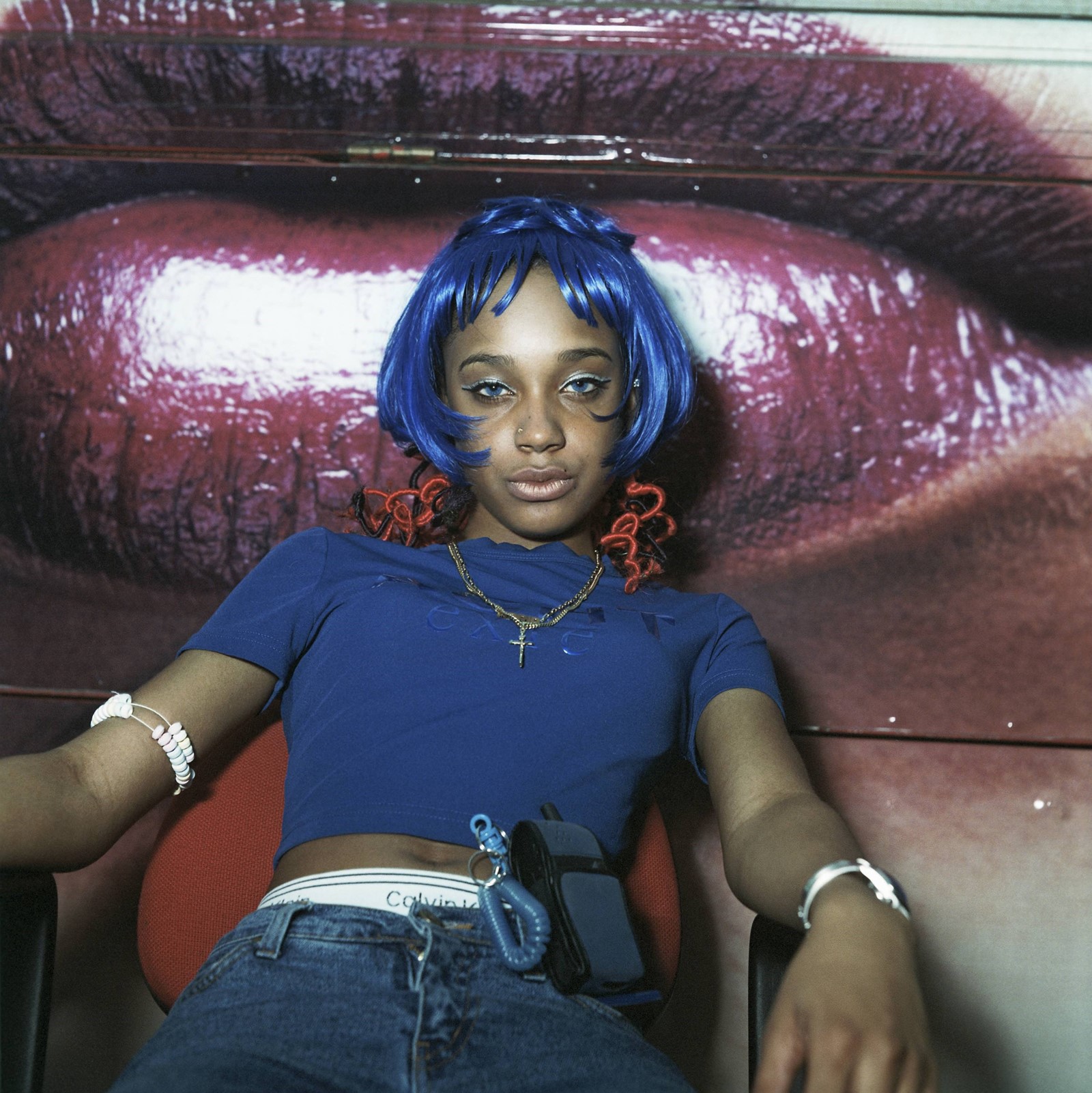
AA: How does it feel, having your work presented as part of this lineage of Black British creativity in Missing Thread?
AP: What’s so great about this exhibition is that it’s going to be a huge discovery for a particular demographic. It’s a real history lesson.
BS: It is an honour to be part of Missing Thread, and I think when I was studying it would have been important for me to know about a lot of the people who are included in the exhibition. There aren’t enough books that talk about certain people who are part of this history, and you can’t find these archives online. I think it’s an exhibition that really helps fill the gap in terms of design history. It is important to just have that set in place: what our design history looks like, and what it means to be a Black British designer. It shows that our creativity is broad, it doesn’t actually have a particular “way of being” and it’s not in a box.
“Our style is used within certain things, but we are not credited. So, there is a lot to be done. Money is being made off of our culture and we are not receiving that money” – Angela Phillips
AA: What would you hope for the audience to take away from seeing your work in the exhibition?
BS: It’s such a 360 moment for me because when I was studying, there was an exhibition called Return to Rude Boy that inspired me to show more of myself and my culture in my work. It just made me feel like Blackness was allowed in my work … fashion is so much about the white storyline and white identity. Anything to do with being Black was seen as political. It’s such a 360 to be in that same space and be part of an exhibition that is part of me, part of Black fashion history. It really is incredible.
AP: For me, there’s a certain vulnerability about revealing my work. I feel like people don’t really know what I look like, unless they know me. So they’ve seen my work for years on Instagram, my archiving, my writing, and I feel like in this time that we’re living in, people are very visible. My film shows my visibility because it shows the intimate, inner workings of how I view things and how much I love the culture.
The Missing Thread: Untold Stories Of Black British Fashion is on show at Somerset House in London until 7 January 2024.
